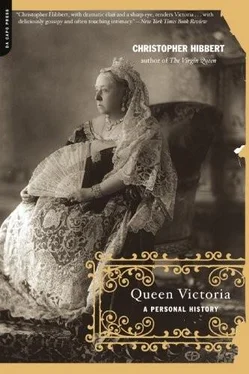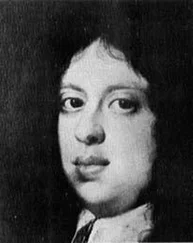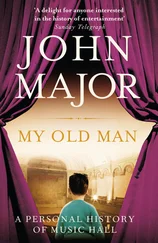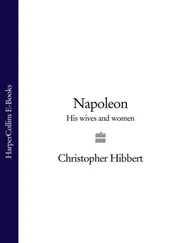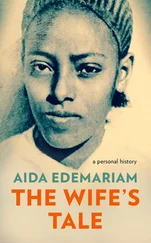Christopher Hibbert - QUEEN VICTORIA A Personal History
Здесь есть возможность читать онлайн «Christopher Hibbert - QUEEN VICTORIA A Personal History» — ознакомительный отрывок электронной книги совершенно бесплатно, а после прочтения отрывка купить полную версию. В некоторых случаях можно слушать аудио, скачать через торрент в формате fb2 и присутствует краткое содержание. Жанр: Биографии и Мемуары, на английском языке. Описание произведения, (предисловие) а так же отзывы посетителей доступны на портале библиотеки ЛибКат.
- Название:QUEEN VICTORIA A Personal History
- Автор:
- Жанр:
- Год:неизвестен
- ISBN:нет данных
- Рейтинг книги:5 / 5. Голосов: 1
-
Избранное:Добавить в избранное
- Отзывы:
-
Ваша оценка:
- 100
- 1
- 2
- 3
- 4
- 5
QUEEN VICTORIA A Personal History: краткое содержание, описание и аннотация
Предлагаем к чтению аннотацию, описание, краткое содержание или предисловие (зависит от того, что написал сам автор книги «QUEEN VICTORIA A Personal History»). Если вы не нашли необходимую информацию о книге — напишите в комментариях, мы постараемся отыскать её.
QUEEN VICTORIA A Personal History — читать онлайн ознакомительный отрывок
Ниже представлен текст книги, разбитый по страницам. Система сохранения места последней прочитанной страницы, позволяет с удобством читать онлайн бесплатно книгу «QUEEN VICTORIA A Personal History», без необходимости каждый раз заново искать на чём Вы остановились. Поставьте закладку, и сможете в любой момент перейти на страницу, на которой закончили чтение.
Интервал:
Закладка:
xviii
The same embarrassments were occasioned at Osborne where one evening in 1900 'just as dear old Lady Erroll had taken off her hair and picked out her teeth someone knocked at the door. She said "Come in!" ' Then she opened it and there stood A. J. Balfour, the future prime minister, in the passage. He could not find his room and was at his wit's end. He had tried Aline's [the Hon. Aline Majendie, a maid-of-honour] and was trembling with bashfulness (Victor Mallet, Life with Queen Victoria: Mane Mallet's Letters from Court 1887-1901, 1968, 199).
xix
Prince Albert is often said to have introduced the custom of the Christmas tree from Germany to England. But the credit for this properly belongs to his wife's grandmother, Queen Charlotte. 'The Queen [Charlotte] entertained the children here, Christmas evening, with a German fashion,' recalled the Hon. Georgina Townshend, state housekeeper at Windsor Castle. 'A fir tree, about as high again as any of us, lighted all over with small tapers, several little wax dolls among the branches in different places, and strings of almonds and raisins alternately tied from one to the other, with skipping ropes for the boys, and each bigger girl had muslin for a frock, a muslin handkerchief, a fan, and a sash, all prettily done up in the handkerchief, and a pretty necklace and earrings besides. As soon as all the things were delivered out by the Queen and Princesses, the candles on the tree were put out, and the children set to work to help themselves' (Memoirs and Correspondence of Field-Marshal Viscount Combertnere, 2 vols., London, 1866, ii, 419).
As a child Queen Victoria regularly had a Christmas tree, and her aunt, Queen Adelaide, always set one up at her Christmas parties for children in the Dragon Room at Brighton Pavilion. (Olwen Hedley, 'How the Christmas tree came to the English Court', The Times, 22 December 1958).
xx
The billiard room, drawing room and dining room all open into each other round three sides of the staircase, with screens of scagliola columns to make the divisions. 'The advantage of this open plan was that all the necessary equerries and ladies-in-waiting could be in attendance without the rooms seeming too large, and that they could be conveniently on call round the corner without having to stand because they were in the royal presence' (Mark Girouard, The Victorian Country House, 80).
xxi
Unlike most of her ladies and many of her other contemporaries, the Queen was not in the least shocked by such paintings of naked women. The directors of an art school, where William Mulready's nude studies were on display in 1853, were warned against letting her see them. She not only clearly and openly admired them but expressed a wish to buy one {Early Victorian England, ed. G. M. Young, ii, 113).
xxii
Not all her family were so impressed, although her grandson's wife, Princess May of Teck, the future Queen Mary, who went there in 1892, was fond of the 'large, white airy house with its great sheet-glass windows looking out to sea, its dining-room decorated with Winterhalter portraits, its pungent and beautiful arboretum, and the newly completed Indian wing', the Durbar Corridor and the Durbar Room, the decoration of which was then nearing completion (James Pope -Hennessy, Queen Mary, 1959, 228). 'Even as a child I was struck by the ugliness of the house, which has been described as "a family necropolis",' wrote Queen Mary's son, King Edward VIII. 'The floors of the corridors and passages were inlaid with mosaic; let into the walls were numerous alcoves each displaying in life size a white marble statue of a dead or living member of "Gangan's" large family. It had long been Queen Victoria's ardent wish that her eldest son would make it his home. But by this time my grandfather's affections had been too long rooted in Sandringham. He had long since made up his mind to get rid of Osborne when it fell to him; and shortly, in spite of the mild protestations of some of his sisters, he handed the property over to the State as a convalescent home for disabled officers of the Boer War' (A King's Story. The Memoirs of HRH. The Duke of Windsor, 14).
xxiii
Before Prince Albert's death she was, however, interested in the clothes of others. In her journal she often gave detailed descriptions of them. 'We were received ... by Lady Bulkeley whose dress I shall describe,' a characteristic entry runs (RA Queen's journal, 9 August 1832). When her eldest daughter left home Victoria pressed her to tell her exactly what she was wearing in Germany: 'What bonnet did you wear on landing? And what bonnet the next two days... What also did you wear on the road ... No one has told me what your toilette was to be these next days!... I see by the papers you wore a green dress at the Cologne concert: was that the one with black lace? I am so anxious to know ... how all my toilettes succeeded ... I am particularly vexed at hearing nothing, about your dresses. Let your German ladies give me an account of them' (Roger Fulford, ed., Dearest Child: Letters between Queen Victoria and the Princess Royal, 1858-61, 32, 34-5, 38).
xxiv
However, she later told Lady Salisbury that Walmer Castle was 'the most uncomfortable house she ever was in' (Kenneth Rose, The Later Cecils, 44).
xxv
The train went along 'very easily though not quite as fast as the Great Western' (Queen Victoria's Journal, 28 November 1843). The Queen had made her first railway journey on the Great Western from Slough to Paddington the year before. The seventeen-mile journey had taken just twenty-three minutes, at an average of forty-four miles an hour. Prince Albert had thought this rather dangerous. 'Not so fast next time, Mr Conductor, if you please,' he is often said to have requested. The Queen's Private Secretary, when arranging a journey to Scotland with the Secretary of the Great Northern Railway in August 1854, gave the instruction: 'Her Majesty travels at the rate of forty miles an hour.' (Public Record Office, RAIL 236/6061, quoted in Jack Simmons, Railways, 253).
xxvi
At Cambridge, 'both in going and returning,' the Queen recorded in her journal, 'the scholars threw down their gowns for us to walk over, like Sir Walter Raleigh' (RA Queen Victoria's Journal, 25 October 1843).
xxvii
The Queen did not take part in the shooting herself. Indeed, she was opposed to ladies shooting at all. When she heard that her granddaughter, Princess Victoria of Hesse, had gone out shooting with her father, she wrote to her: 'I was, darling Child, rather shocked to hear of your shooting at a mark but far more so at your idea of going out shooting with dear Papa. To look on is harmless but it is not lady like to kill animals & go out shooting - and I hope you will never do that. It might do you gt harm if that was known as only fast ladies do such things' ( Advice to a Grand-daughter. Letters from Queen Victoria to Princess Victoria of Hesse, ed. Richard Hough, 26).
xxviii
'Dear Grand-Mama's taste in wallpapers was rather sad and very doubtful!!!' her daughter-in-law, Queen Alexandra, had to concede in a letter to Queen Mary in 1910. 'That washed out pink moire paper in the sitting-room is sickly and the one in the bedroom appalling but I never liked to touch anything of hers so I left it exactly as she had it ... I wonder if you have made any alterations' (RA/CC/42/81, quoted in Georgina Battiscombe, Queen Alexandra, 1969, 220).
xxix
Интервал:
Закладка:
Похожие книги на «QUEEN VICTORIA A Personal History»
Представляем Вашему вниманию похожие книги на «QUEEN VICTORIA A Personal History» списком для выбора. Мы отобрали схожую по названию и смыслу литературу в надежде предоставить читателям больше вариантов отыскать новые, интересные, ещё непрочитанные произведения.
Обсуждение, отзывы о книге «QUEEN VICTORIA A Personal History» и просто собственные мнения читателей. Оставьте ваши комментарии, напишите, что Вы думаете о произведении, его смысле или главных героях. Укажите что конкретно понравилось, а что нет, и почему Вы так считаете.
